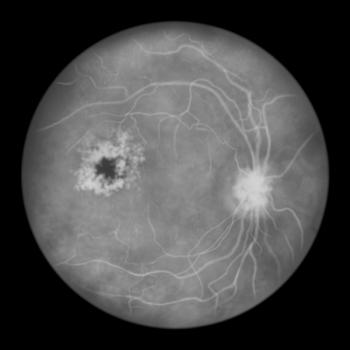
Novel Drug Combo Improves Survival in Patients With Metastatic Castration-Sensitive Prostate Cancer
Key Takeaways
- Niraparib plus AAP reduced cancer progression risk by 37% in mCSPC patients with HRR gene alterations.
- The combination therapy showed significant improvement in radiographic progression-free survival, especially in the BRCA-mutated subgroup.
Niraparib combined with standard therapy significantly improves progression-free survival in men with HRR-deficient metastatic castration-sensitive prostate cancer.
Niraparib (Zejula; GSK) plus abiraterone acetate and prednisone (AAP) reduced the risk of cancer progression by 37% compared with AAP alone in patients with metastatic castration-sensitive prostate cancer (mCSPC) with homologous recombination repair (HRR) gene alterations. The data, reported in Nature Medicine, are from the phase 3 AMPLITUDE trial (NCT04497844).1,2
PC is the second most common cancer diagnosed in about 1.5 million men each year, and is the second leading cause of cancer-related mortality. When identified early, PC is treatable and can be cured. However, many patients are diagnosed in later stages when the disease is far more aggressive and difficult to treat.3,4
Following hormone therapy relapse, poly(ADP-ribose) polymerase (PARP) inhibition is an established treatment for patients with mCSPC, but many become resistant to these therapies. Researchers from University College London (UCL) hypothesized that adding PARP inhibition added to standard-of-care treatments within 6 months of starting androgen deprivation therapy for mCSPC could improve radiographic progression-free survival (PFS). They conducted a randomized, placebo-controlled, double-blind study investigating niraparib, a highly selective, potent PARP inhibitor approved for treatment of women with ovarian cancer.1,3,5
“Although current standard treatments are very effective for the majority of patients with advanced prostate cancer, a small but very significant proportion of patients have limited benefit,” Gerhardt Attard, PhD, UCL Cancer Institute, said in a news release. “We now know that prostate cancers with alterations in HRR genes account for a significant group of patients whose disease recurs quickly and has an aggressive course. By combining with niraparib we can delay the cancer returning and hopefully significantly prolonging life expectancy.”3
The trial enrolled a total of 696 patients (median age 68 years) with mCSPC, of whom 56% had BRCA1 or BRCA2 alterations; 66% had HRR gene alterations; 78% had high-volume metastases; and 16% had received docetaxel. They were randomized 1:1 (348 per group) to receive either niraparib (200 mg once daily) and AAP (AA: 1000 mg once daily; prednisone: 5 mg once daily) or placebo and AAP (AA: 1000 mg once daily; prednisone: 5 mg once daily) in a 28-day treatment cycle. The primary end point was radiographic progression-free survival (rPFS) with a secondary end point of overall survival (OS).1
The study successfully met its primary end point, demonstrating a significant improvement in rPFS. The benefit was first observed in the BRCA-mutated subgroup, where median rPFS was not reached at the time of analysis in the niraparib plus AAP arm, compared with 26 months in the AAP-only arm (hazard ratio [HR], 0.52; 95% CI, 0.37–0.72; P < .0001). A similar advantage was later confirmed in the overall intention-to-treat population (HR, 0.63; 95% CI, 0.49–0.80; P = .0001).1
Although OS is immature, the trend favors the niraparib combination. At the time of analysis (193 of 389 events), the HR for OS was 0.79 (95% CI, 0.59–1.04) in the total population and 0.75 (95% CI, 0.51–1.11) within the BRCA subgroup.1
Treatment-related toxicity was more frequent with the combination therapy. Grade 3 or 4 adverse events occurred in 75% of patients receiving niraparib plus AAP, compared with 59% receiving AAP alone. The most common severe adverse events in the combination group were anemia (29%), with 25% of patients requiring a blood transfusion, and hypertension (27%). There were 14 treatment-emergent adverse events leading to death in the niraparib group and 7 in the placebo group.1
“In conclusion, this is, to our knowledge, the first demonstration of efficacy of a PARP inhibitor in mCSPC,” the authors wrote. “The combination of niraparib and [AAP] was associated with significantly longer [rPFS] in patients with mCSPC with HRR gene alterations.”1
REFERENCES
1. Attard G, Agarwal N, Graff, J.N, et al. Niraparib and abiraterone acetate plus prednisone for HRR-deficient metastatic castration-sensitive prostate cancer: a randomized phase 3 trial. Nat Med. October 7, 2025. doi:10.1038/s41591-025-03961-8
2. A study of niraparib in combination with abiraterone acetate and prednisone versus abiraterone acetate and prednisone for the treatment of participants with deleterious germline or somatic homologous recombination repair (HRR) gene-mutated metastatic castration-sensitive prostate cancer (mCSPC) (AMPLITUDE). Updated September 12, 2025. Accessed October 8, 2025. https://clinicaltrials.gov/study/NCT04497844
3. New drug combination offers hope for men with advanced prostate cancer. News Release. October 7, 2025. Accessed October 8, 2025. https://www.eurekalert.org/news-releases/1100746
4. American Cancer Society. Key Statistics for Prostate Cancer. Updated May 30, 2025. Accessed October 8, 2025. https://www.cancer.org/cancer/types/prostate-cancer/about/key-statistics.html
5. Stewart J. Zejula FDA approval history. Drugs.com. July 3, 2023. Accessed October 8, 2025. https://www.drugs.com/history/zejula.html
Newsletter
Stay informed on drug updates, treatment guidelines, and pharmacy practice trends—subscribe to Pharmacy Times for weekly clinical insights.


























































































































































































































